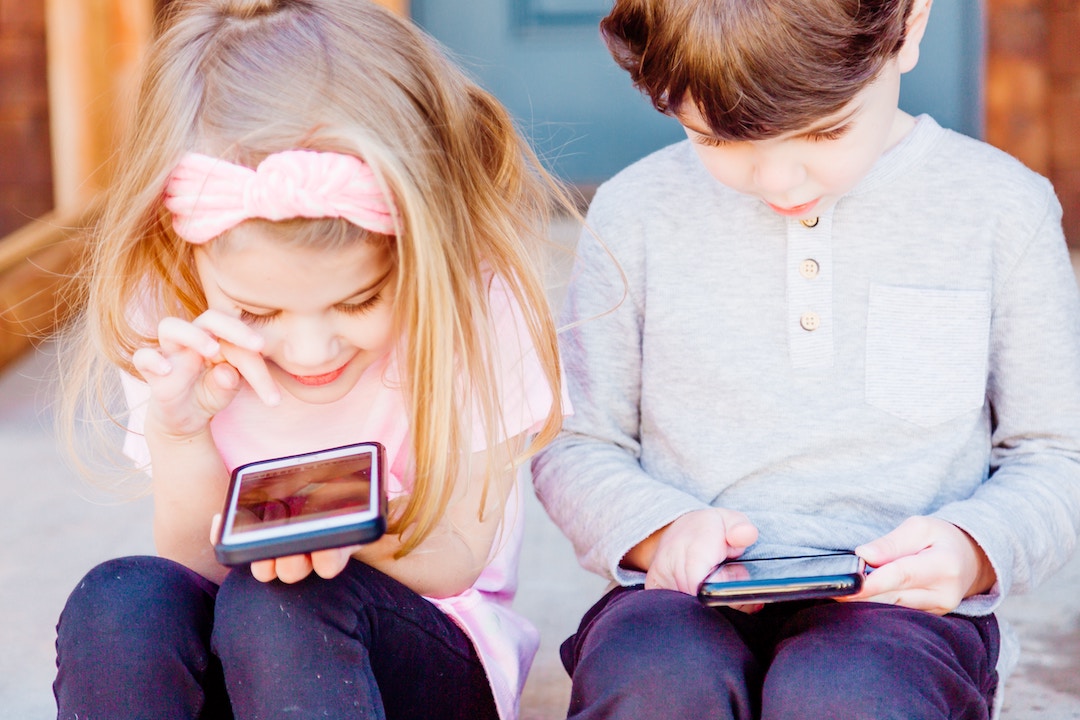Creative » Portrait: You know the solution, now actually act upon it
Jaws. Gravity.
If I asked you how those two were connected, you’d be forgiven for looking at a link between two Hollywood blockbuster Oscar-winning films, but that’s because you’d have been duped by a quirk of grammar.
If I rescue those two items from their responsibility of having to open a sentence, it turns out the two things I’m referring to are jaws and gravity, not Jaws and Gravity. Yep, gravity – the thing that permanently linked Sir Isaac Newton to apples, and jaws – the bits dangling down from skulls.
Still hard to notice a link, I’m sure you agree. But they both have made a major impact on how content is displayed – especially images and video.
And no, this isn’t about producing jaw-dropping content, but I thank you for thinking that.
I’ll try and explain myself before you get more baffled than a motorbike’s exhaust, so I’ll start by taking you back a hundred years or so…
Gravity.
If there’s one thing about gravity we need to consider, it’s that it basically keeps things stuck* down, and so we humans ferry around the floor – left and right, back and forth, but can’t go up and down through the air unlike the bewinged beasts of the world.
For that reason, when acting out a play, ballet, opera, anything on stage, the stage is flat and just two dimensional. The actors move about on this two-dimensional plane and occasionally there’ll be bits and bobs going up and down, but you won’t see a ballet dancer fully bourrée-ing up a wall. For that reason, the vertical space for movement on stage was not as crucial as the horizontal. Stages, therefore, were created wide and flat. Sure, some sets had bits to let actors climb, but it was always a novelty, not a default.

When TV and movies came along and decisions were made about what shape the screen should be, it made sense to replicate the view of a theatre-goer, and so content was filmed in ‘landscape’.
That set a precedent which has continued to this day and computer monitors, generally using the CRT technology pioneered by TV, replicated that system. When adjustments were made to the ratio, it still made sense to widen the screens from 4:3 to 16:9, rather than increase the height – because if you did that all you’d see would be more ground or sky, when all the action generally takes place at one level.
We ended up with TV and computer screens in ‘landscape’ format. Sure, they can be programmed to work in portrait, and in some fairly obscure situations that works well, but not for a day to day user.
Jaws.
Thanks for sticking with me this far – now we consider jaws, so we need to look at faces. Look, over at your friend or colleague, or that person opposite you on a train or wherever you are when you read this (if you’re on the toilet, you can just imagine a face, that’s fine, don’t get up especially).
You’ll see the ear (which sits at the back of the jaw bone) is up near the person’s eye. The mouth, at the front of the jaw, is well below that eye – I’m willing to punt there’s a nose in between, too.
Where am I going with this? Well in order to hear and speak we need to use the ear and mouth. If we want to create a single device to facilitate both functions, like a telephone, it needs to be able to connect the two.
I know this isn’t news, but I’m going somewhere with this, trust me.

In the early days of telephony this was a fairly cumbersome combo of two parts, but over time, both functions became united in a hand-held triumph of ergonomics. Fast-forward through early mobile telephones, and into the era of screens being present, the orientation of the phone was still dictated by needing to have a speaker at the top, and a mic at the bottom. To remain lightweight and hand-holdable the phones stayed slim and as the screens grew, they filled the space downwards, dispensing with the keyboard and having more screen instead.
We ended up with smartphones in ‘portrait’ format. Sure, they can be programmed to work in landscape, and in some fairly obscure situations that works well, but not for a day to day user.
Except wait, that isn’t really true – people are forced to use their phones in landscape for videos… so the smartphones have a screen rotate built in.
But… why?
Have you tried texting when a phone is landscape? It’s awkward.
Made a call with a phone landscape? Your ears are in the wrong place, get that checked.
Apps nowadays assume you’re going to be holding it portrait… so what’s the screen rotate for? Oh yeah… many videos or games are still produced in landscape.
If you were to type ‘people holding mobile phones’ into your fave search engine’s image search, and you’ll see everyone is holding it ‘portrait’. Because that’s normal.

Instagram/Facebook Stories, Snapchat and TikTok have made use of the portrait format and are now completely dominating video uploads, because of people on smartphones.
Not long ago, people were chastised for ‘filming in portrait’ – it would cause no end of problems when you watched a news programme on TV using user-submitted footage, but that’s because the news is on a landscape screen.
But if people would have been viewing on a phone, then portrait would have been fine.
This portrait v landscape switch isn’t news, though…
True, people have been saying this for a while. But how many act upon it?
Let’s use a quick example here.
We recently had a few different email service providers’ (ESPs’) sales people in, each demonstrating their latest software. Each one was fantastic, by the way, but for each one, we queried how easy it was for us to create emails in mobile view. Each time we asked they gleefully showed how you switch, and they were prepared for that, and 62% (or whatever their own stat was) of emails were opened on mobile and they understood that and you should be mobile-first etc.
But why, then, were each of their default design options still landscape? Why did they demonstrate the creation of emails in desktop view until we asked to see the mobile views?
It’s because, despite people KNOWING more views and opens happen on a mobile – whether that’s social posts, videos, emails, SMS (obviously mobile first…), they still had this habit of working in landscape as a default, with mobile/portrait as an afterthought.
That’s wrong.
And it’s not their fault, I’m not picking on the ESP providers at all – marketers are always designing stuff in landscape as a default, so why wouldn’t the ESP guys show them that?
It’s just time for marketers to stop paying lip service to the rise of ‘portrait’ and actually act on it like they believe it, or risk getting abandoned like a beach with a shark prowling nearby.

Young people
When marketing to young people all this is more crucial than ever. When you’ve grown up with the internet at your beck and call, you rightly feel constrained by the rigid format of TV.
Programmes are typically 30 or 60 minutes… Shown at a set time… With ad breaks… Nah.
The internet lets you watch what you want, when you want, with millions, even billions of different ‘channels’ to choose from, not just a few hundred like TV. Content can be any length. Ads can run alongside, not interrupt, the content. For young people, TV is dated. Like magazines, radio, or DVDs.
Kids nowadays usually get control over a mobile phone before they get control over the family TV, so guess what they prefer?

Not only are they in control of the content they see, but their mates are on there. And they can create content themselves, too. Or switch to play a quick game, or Google something within seconds. TV – even Smart TV – can’t compete with that.
(Here’s a tip to really make sure a young person sees your stuff – send it to them in the post. Trust me, they’ll open it.)
So there we have it – how jaws and gravity have both dictated how we saw video content over the years, and how the jaw has finally overtaken gravity.

*don’t @ me about this – ‘stuck’ is the word I’m gonna use so we don’t end up discussing gravitons, or getting Higgs involved.



© 2022 Maze Media Ltd • All Rights Reserved